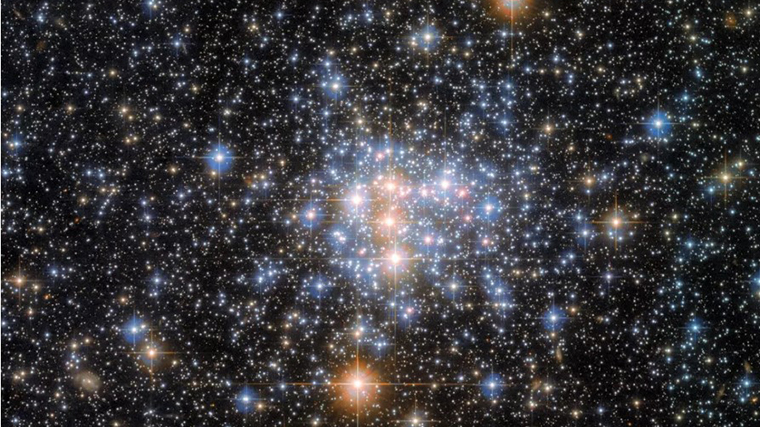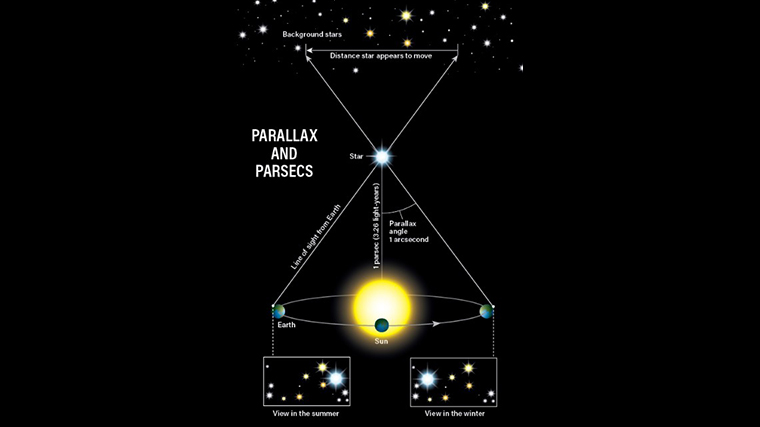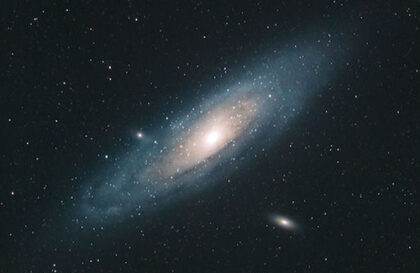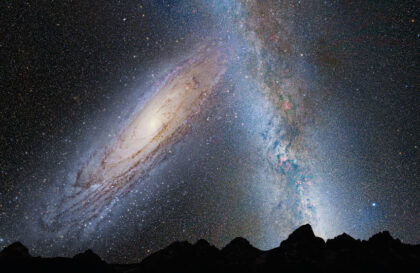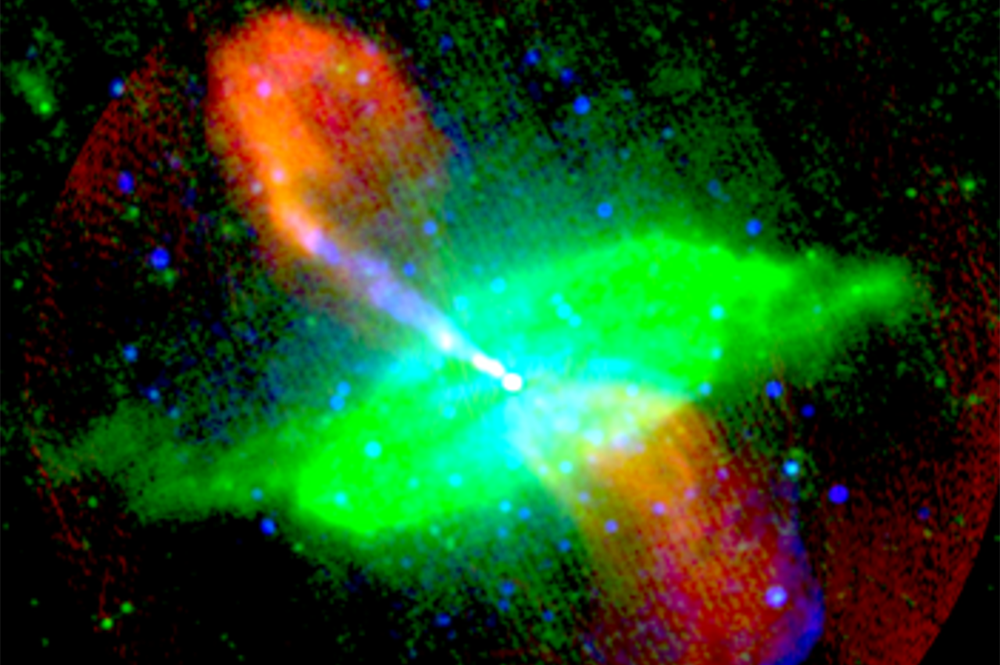NGC 376 is a star cluster in the Tucana constellation. It was observed by Scottish astronomer James Dunlop on September 2, 1826. It is included in the original New General Catalog. John Dreyer described it as a “bright, small, round globular cluster.”
NGC 376 is a young star cluster located in the eastern part of the Small Magellanic Cloud. It has lost 90% of its original mass. It is about 28 million years old. Its mass is about 3400 times that of the Sun.
A photograph of a fragment of the Small Magellanic Cloud (SMC) taken by the NASA/ESA Hubble Space Telescope is shown. The SMC is a dwarf galaxy, one of the Milky Way’s closest neighbors, located at a distance of about 200,000 light-years. It is situated alongside the Large Magellanic Cloud. Both galaxies are visible from the southern hemisphere and some northern regions.
Scattered clusters like NGC 376 are not tightly packed. This sets them apart from globular clusters, where the many stars in the images merge together. Even in the densest parts of the galaxy, the individual stars of NGC 376 are clearly visible.
NGC 376 is interesting and valuable for scientific study. It resides in the Small Magellanic Cloud, not in our Milky Way. The SMC is moving through space about 200,000 light years away from us, accompanying the Large Magellanic Cloud. Both are in motion without being hindered by the Milky Way’s gravity.
The SMC is home to numerous stars. Scientists appreciate studying it due to its proximity and brightness, allowing them to observe phenomena that are challenging to discern in distant galaxies. In 2021, NASA declared the SMC to be a goldmine for research.
The remarkable aspect of NGC 376 is its capacity to highlight individual stars. Even within a sizeable cluster, the stars in NGC 376 stand out.
The Small Magellanic Cloud possesses the property of nurturing star formation, a truly impressive feat.
Looking ahead, the Magellanic Clouds are destined to merge with our Milky Way. The Large Magellanic Cloud will likely accomplish this in about 2.4 billion years—before the projected collision between the Milky Way and the Andromeda galaxy.
Image credit:
https://www.space.com
